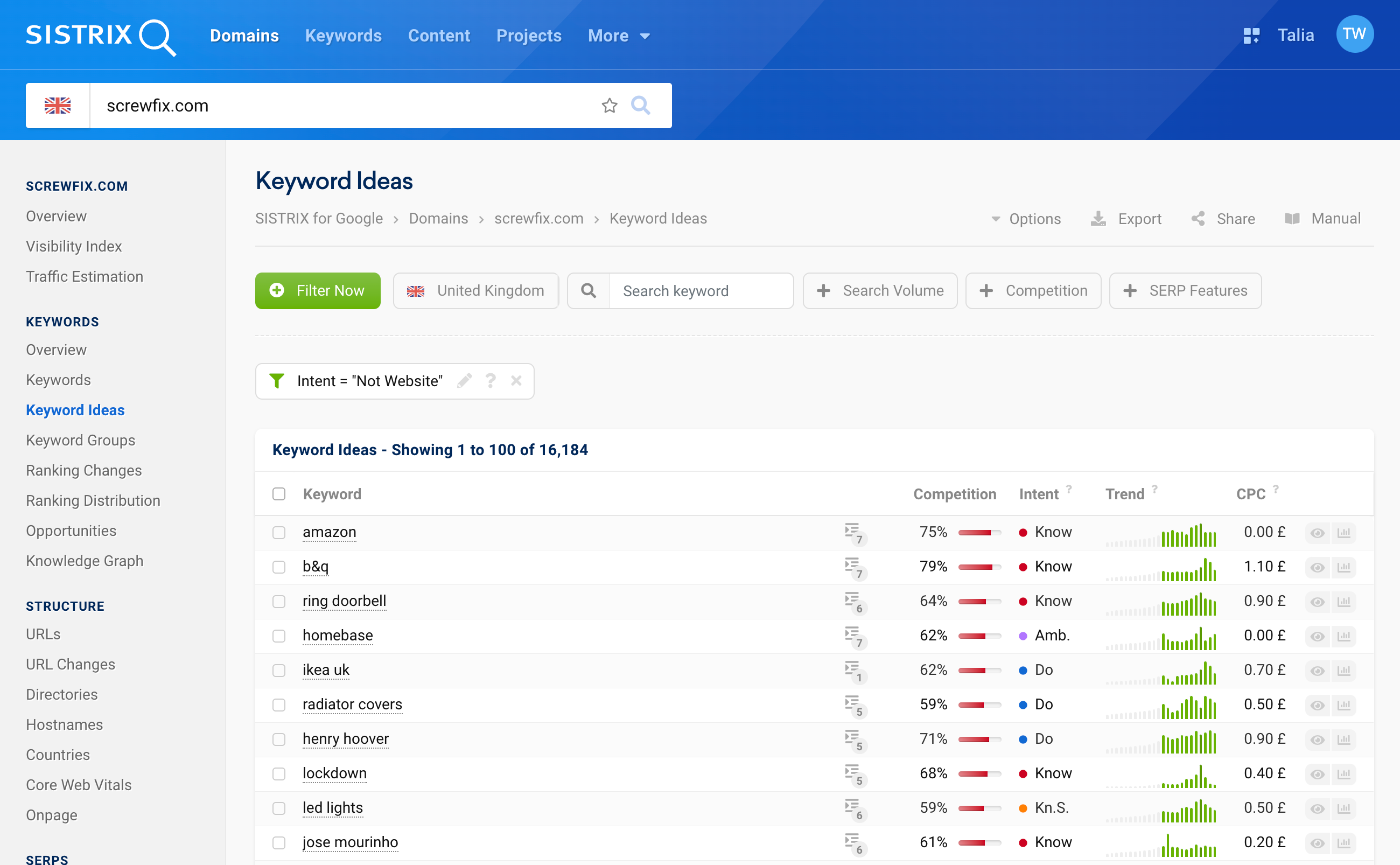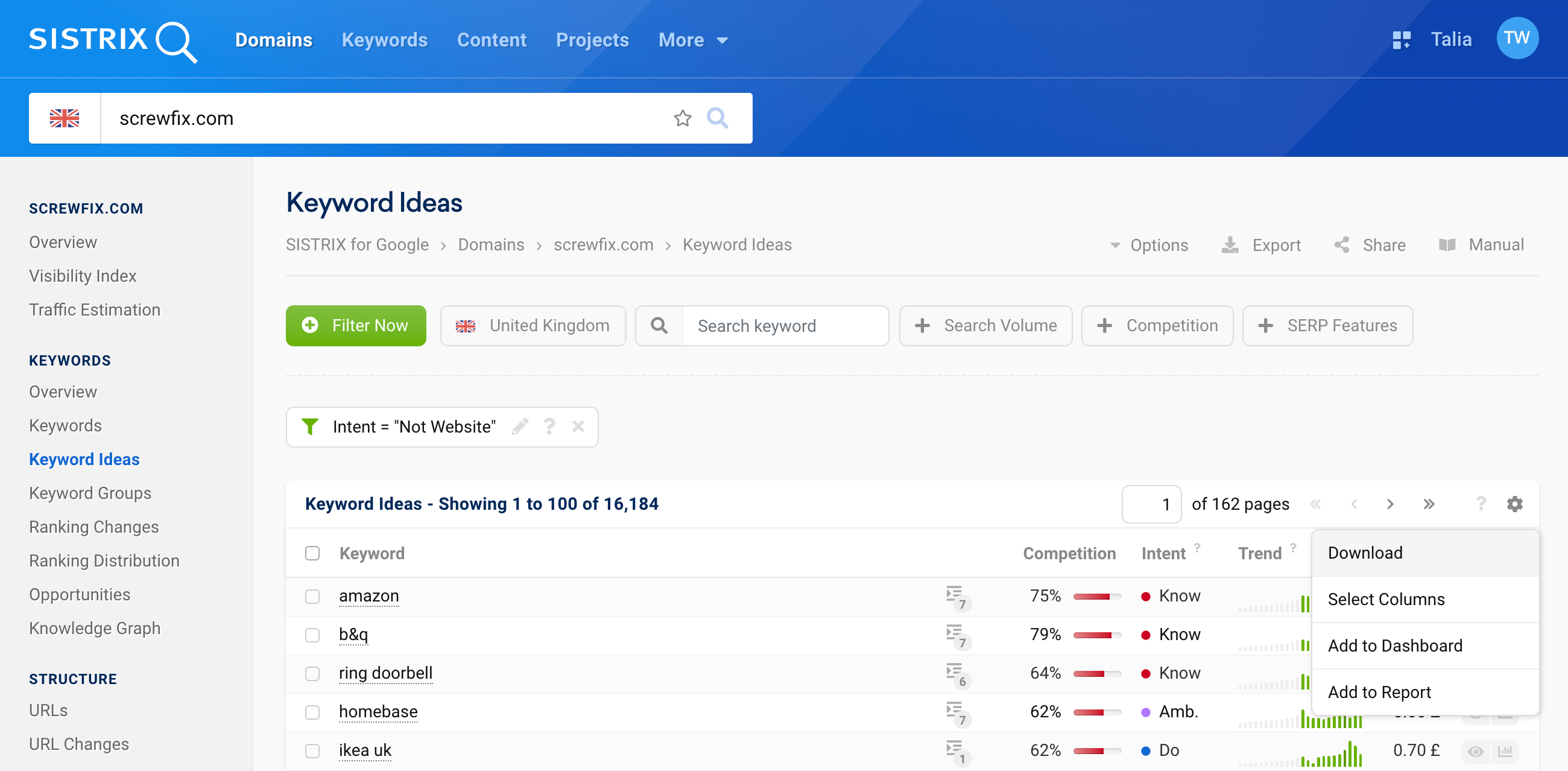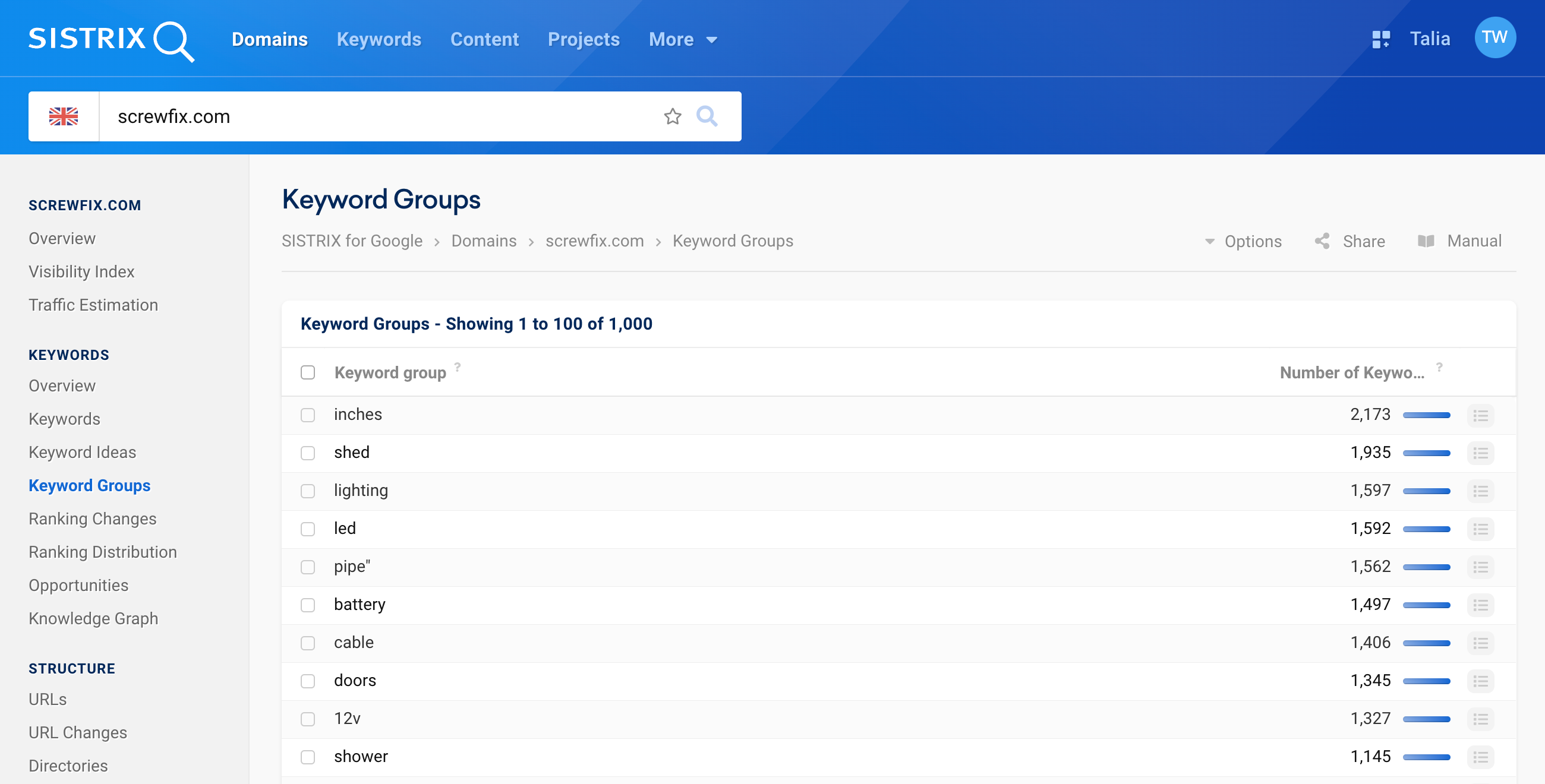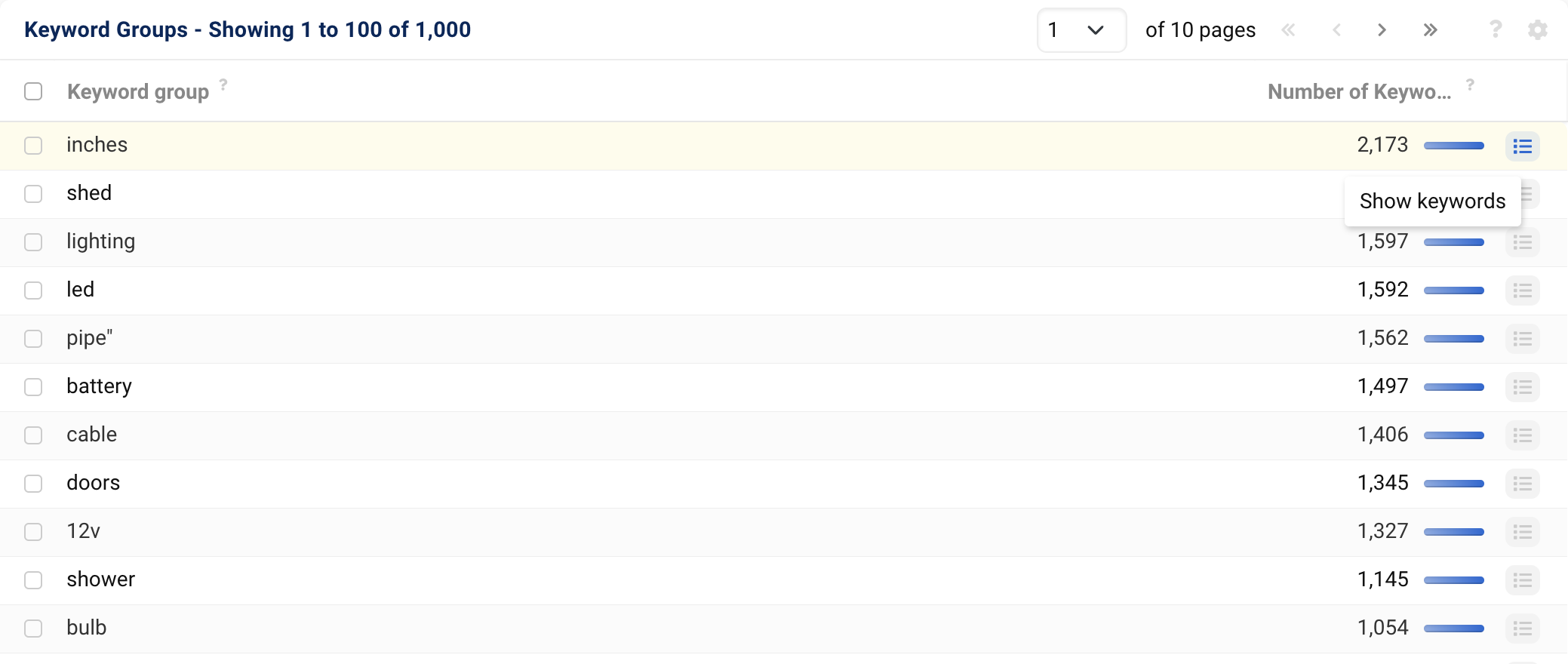SISTRIX offers various ways to research new keywords for your SEO. The Keyword Ideas analysis, the Keyword Groups and the Google Knowledge Graph will help you quickly find new keywords.
Keyword research is a crucial step to successful SEO. In a separate tutorial, we detail different approaches you can take on keyword research, and its significance.
Keyword Ideas
After you have entered a domain into the SISTRIX search bar, you can access the Keyword Ideas via the navigation on the left-hand side 1.
To get the ideas displayed in the table, we look for keywords for which your website already ranks successfully and then suggest other similar keywords. This way you can expand the content of your website and achieve new rankings as well as more visitors from Google.
Depending on screen size and individual settings, you will see the columns Keyword, Traffic, Competition, Intent, Trend and CPC as well as the buttons for the SERP features, Keyword Preview and Keyword History. All of these are explained in more detail in our tutorial on working with the keyword table of a domain.
Filter the Table

By default, we have set a filter that excludes keyword with the intent “Website”. These are almost always (foreign) brand names. In most cases, rankings for these keywords bring neither visitors nor revenue. You can of course deactivate the filter at any time by clicking on the “X”.
You can also filter the table according to your specific requirements.

The filters for search volume, competition and SERP features can be found above the table as predefined filters. The green “Filter Now” button lets you create individual filters.
You can also learn more about the different filter options in our tutorial on keyword filters.
Using the checkboxes on the left side of the table, you can easily add found keywords to lists and analyse them further. This is explained step by step in our tutorial on working with lists in SISTRIX.
Export Keyword Ideas
Since this list can quickly become very extensive, it may be a good idea to export the results and analyse them further in a spreadsheet programme.
To do so, open the box options via the cogwheel at the top right of the table box 2 and select the option “Download”. Alternatively, you can also click on the “Export” button 3 in the navigation bar above the filters.
You will receive a CSV file that you can import into Excel or another programme for further analysis.
Keyword Groups
You can also discover new keywords with the Keyword Groups in SISTRIX. You can quickly and easily identify relevant topics on your own or your competitor’s website and determine your main keyword focus.
This feature can also be found in the navigation on the left side 1, just below the Keyword Ideas.
To create the groups, we look at all keywords for which a domain has rankings and group these into their word stems.
In the table, you will see the name of the respective keyword group, i.e., the keyword that all search queries have in common (the word stem). On the right-hand side, you will find the number of keywords that this group contains.
The groupings allow a quick assessment of which topics the website is most likely of interest to.
The button on the right 2 allows you to directly display the keywords of this group. You can then further analyse these keywords in a list, for example.
Reveal the Content Strategy of Competition
Keyword Groups can also help you understand domains and their SEO strategies.
Let’s take a look at the domains aldi.co.uk and waitrose.com, for example. At first glance, we would probably consider Aldi and Waitrose to be competitors. However, if we only look at the keyword groups, a different picture emerges.
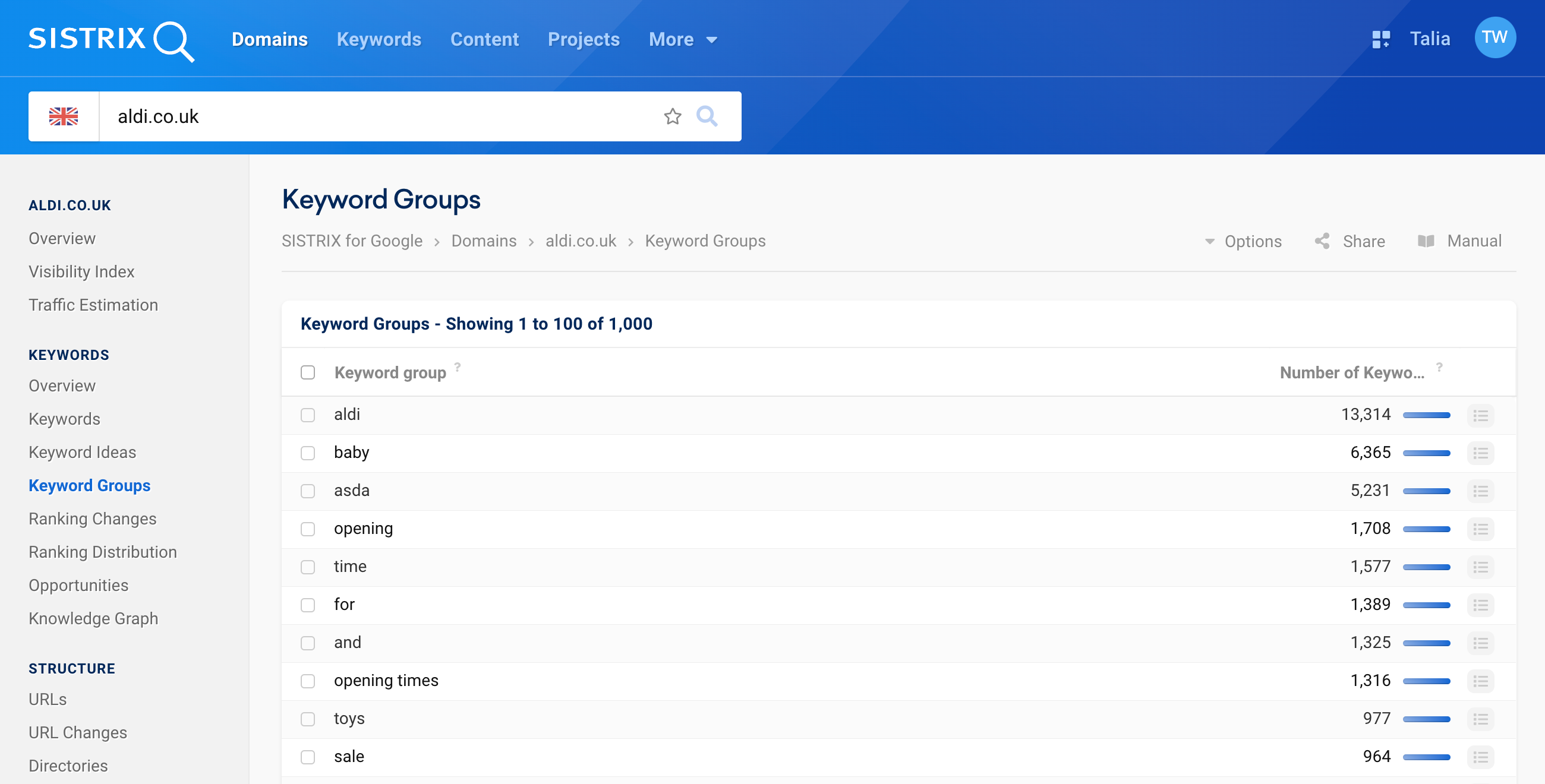
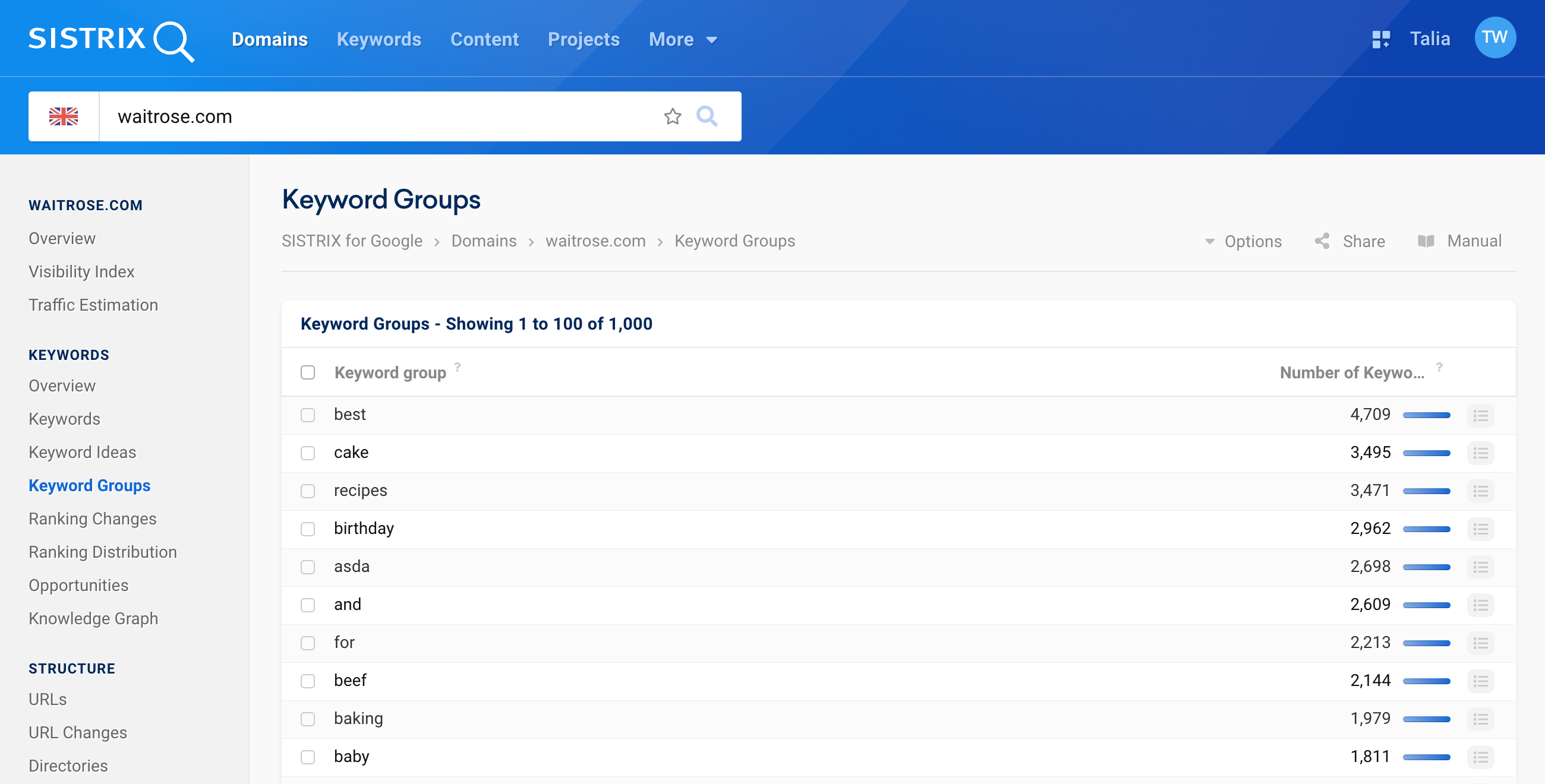
It quickly becomes apparent that the largest keyword group of aldi.co.uk are brand keywords, with around 13 thousand keywords.
Such a group cannot be found at all in the first ten groups for Waitrose. If we search for it, we see that the domain only has 251 ranking keywords with the word stem “waitrose”.
On the other hand, for Waitrose we find keyword groups that we probably initially expected to find for a supermarket: cake, recipes, beef, baking.
A quick look at the keyword groups of the two domains already shows you that there are different SEO strategies behind the pages. If necessary, you can now continue the competition analysis. We explain exactly how in the tutorial on competitor analysis.
Identify Hacked Websites
A scenario that probably doesn’t belong to your daily SEO tasks, but where the keyword groups can also help you if the worst comes to the worst: Detect whether your own or another domain has been hacked.
If you look at the keyword groups of a page and find groups that do not match the content of this domain, it is possible that this page has been hacked. You don’t always notice this when you click on the homepage.
Keyword Opportunities & Google Knowledge Graph
Aside from searching for new keywords, you should also try improving your existing rankings. For this purpose, SISTRIX provides the Opportunities feature, which we explain to you step by step in a separate tutorial.
The Google Knowledge Graph panel analysis can also help you optimise your keyword rankings. You can learn all about this in the tutorial “Google Knowledge Graph Data – How Can It Help Improve My SEO?”.
